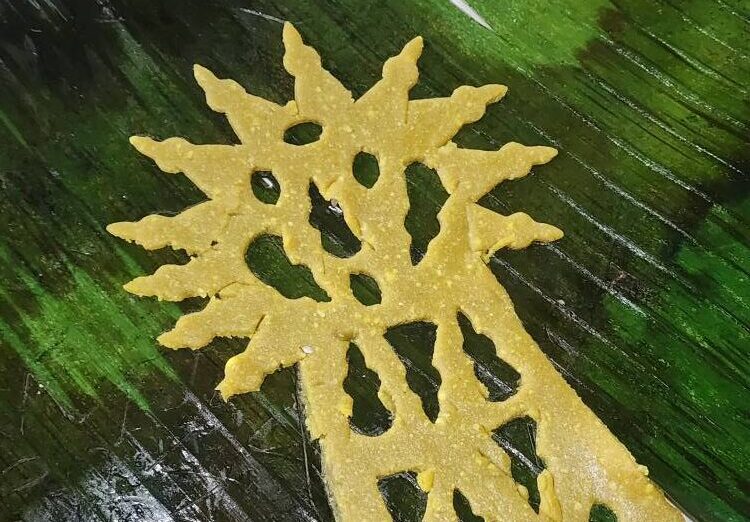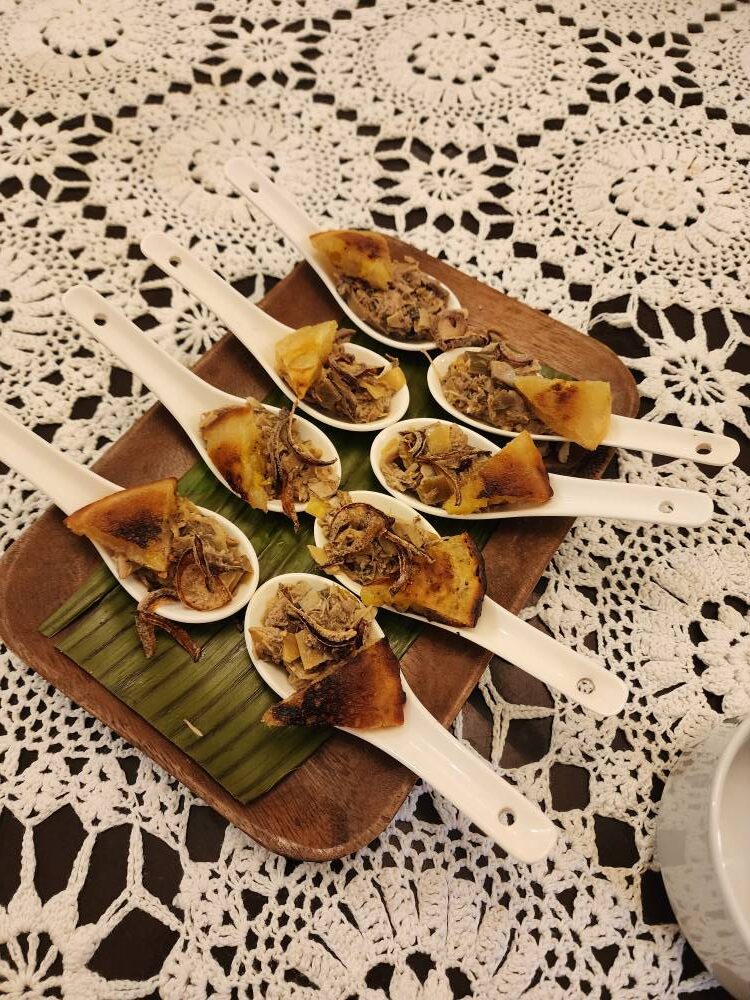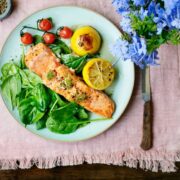Rediscovering Laguna’s heritage through food

It was before the break of dawn when I set out for Santa Cruz, Laguna, to meet chef Gel Salonga Datu and her husband Dino Datu. They welcomed me to their cafe, Ted’s Kitchen—with unpasteurized kesong puti and freshly baked bread, followed by beef tapa for breakfast. My morning was slowly unfolding deliciously.
But with Gel and Dino, I knew I was in for more than a good meal—it was a heritage journey, too.
We headed to the lakeside town of Pakil to visit Anita Añonuevo, beloved and known by many as “Nanay Nits”—the only remaining maker of the birhen-birhenan, or Turumba cookies, which was a rare, sacred delicacy.
The origin of the Turumba festival
The centuries-old Turumba festival is a celebration of faith, joy, and healing. It honors the Seven Sorrows of the Blessed Mother, remembered through the lupi (or “fold”) of seven novena prayers and processions. With each lupi, the people of Pakil gather in song and dance, turning sorrow into thanksgiving through the rhythmic turumba.
Nanay Nits shared the story: Several fishermen once saw a framed painting of Our Lady of Sorrows floating in the lake near Pakil. They tried to bring it ashore but could not. One Sunday later, a group of women found the same painting resting on a large rock. They also tried to lift it—to bring it to the church—but it was too heavy. They then called the parish priest, who gathered the townspeople to pray over the image. After the prayers, the painting suddenly became light enough to carry.
As the people bore the icon toward the church, they began to sing and dance joyfully, chanting, “Sa Birhen!” And with that, the Turumba festival was born.
(Fun fact: The image of Our Lady of Sorrows is not life-sized, as one might expect, but a small hand-painted icon.)
A labor of love
Turumba is believed to mean “natumba sa tuwa,” or to “fall into joy,” through sorrow that transforms to joy by virtue of faith and devotion to Mama Mary. During the festivities, the Turumba cookies are sold outside the church. Pilgrims and devotees believe that the treats carry the Blessed Mother’s intercession—bringing comfort, blessings, and healing to those who partake in it with faith.
Nanay Nits learned how to make the cookies from her mother-in-law. It was the joy of shaping the cookies into the likeness of the Virgin that she was drawn to. But there is nothing ordinary about the Birhen-Birhenan. The process is laborious—a love offering of sorts by the maker to the Virgin.
The process begins by soaking glutinous rice overnight. The rice is drained and pounded together with turmeric. To the mixture, melted panutsa straight from the stove is incorporated by kneading it into the rice flour. “My hands often hurt and blister,” Nanay Nits confesses.
When the dough is smooth, she rolls it thin then cuts it with her self-made shapers and a precision cutter… working meticulously to achieve every detail. The cookie is then cooked on a hot pan brushed with a little oil. It is flipped and left to cook until firm.
Despite the difficulties that come with age, Nanay Nits continues to make the birhen-birhenan when she can—as an act of devotion to Mama Mary. With a sigh she says, “I am old. Hopefully, my granddaughters can carry on the tradition.”
We bid Nanay Nits goodbye, grateful for the rare privilege of witnessing a true food artisan at work to keep the dying art of Turumba cookies alive.
Laguna’s food and culture
Our next stop was Lumban, Laguna—the embroidery capital of the Philippines, where artisan Ailyn Del Moral and master bordadoras sew intricate designs onto jusi, one needlepoint at a time. Eventually, I had to return to Manila, but not before savoring Laguna’s cuisine at Aurora, founded by the late chef Day Salonga, Gel’s brother.
I enjoyed the sinugno (fish in burnt coconut milk), ginataang kalabaw with papaya, the delicious ginataang yapyap (tiny shrimps), cachuela (bangus in kamias and miso), and the unforgettable inalamangang hornong baboy—crispy pork tossed in alamang—that I still dream of today.
A most interesting dish was the minanok—a post-war creation from Santa Cruz that mimics chicken using puso ng saging stewed in coconut vinegar and burnt cream. It’s a merienda staple, often paired with maruya (banana fritters).
My half-day spent in Laguna was brief but deeply meaningful.
Discover Laguna’s local food, crafts, art, and culture on Oct. 25 at the 5th Sa Pantalan – Biyaheng Pangkatagalugan Festival at Ted’s Warehouse, Santa Cruz, Laguna

Minanok
Ingredients
- 3 coconuts, grated
- 1 cup water
- 1 large or 2 small banana hearts
- 2 red onions, minced
- 6 cloves garlic, minced
- 1 thumb ginger, minced
- 1 cup coconut vinegar
- 1 tsp black pepper
- 3 Tbsp oil
- Patis, to taste
- 6 pcs charcoal
Procedure
- Place grated coconut in a bowl. Heat charcoal until red hot, then toss with the coconut, cover, and let it toast for 5 minutes.
- Remove charcoal, then add 1 cup water, squeeze out the cream, and strain.
- Boil sliced banana heart until tender, drain, and shred.
- In a pan, sauté garlic, onion, and ginger in oil. Add banana heart, vinegar, patis, and pepper. Let it simmer for 2 minutes.
- Add coconut cream and cook over low heat until thick and oily.
- Garnish with fried onions and serve with maruya.

















